Blog Archive: March 2025
How to Install Google Analytics for Substack Newsletter
| Servers | 564 seen
 I've been using Substack to publish my newsletter, Covered Calls with Reinis Fischer. Substack’s built-in analytics are quite decent for basic insights, but if you’re looking for more detailed data, I’ll walk you through the process of connecting Google Analytics to track its performance.
I've been using Substack to publish my newsletter, Covered Calls with Reinis Fischer. Substack’s built-in analytics are quite decent for basic insights, but if you’re looking for more detailed data, I’ll walk you through the process of connecting Google Analytics to track its performance.To install Google Analytics 4 (GA4) for your Substack newsletter and track its performance, follow these steps. This process involves setting up a Google Analytics account, obtaining a Measurement ID, and linking it to your Substack publication. Here’s how to do it:
- Go to analytics.google.com and sign in with a Google account. If you don’t have one, create it.
- Click “Start measuring” or “Admin” (gear icon) if you already have an account, then select “Create Account.”
- Enter an account name (e.g., your publication name or brand). You can use this account for multiple properties if needed.
Set Up a Property for Your Substack
- After creating the account, click “Create Property.”
- Name the property (e.g., “Substack - [Your Newsletter Name]”).
- Select your…
Palolem Beach / Goa / India
| Travel guides | 24 seen
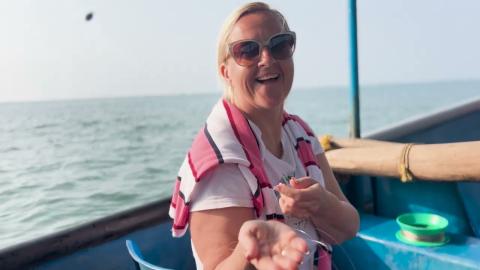
Palolem beach movie is out - or during the winter school break (2024/2025), we returned to India—Goa, and one of our favorite spots on Earth: Palolem Beach.
With a short stop in Delhi, warmly hosted by the Klimis family (Aleksandra Klimi & Evangelos Klimis), we kicked off another unforgettable adventure. Besides African Swine Flu - Days were filled with sunbathing, fishing, painting, and, of course, a little rum-sipping by the shore.
My High-Protein / Ultra-Rich Calorie Deficit Diet (Banana & Matsoni) Helped me to Drop about 5kg in 3 weeks
| Health & Wellness | 261 seen
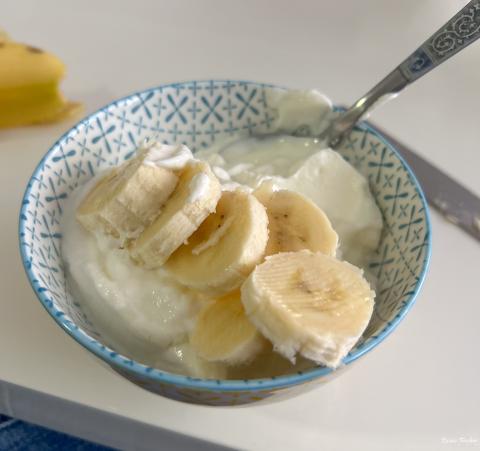
For the past three weeks, I’ve been sticking to an ultra-low-calorie diet that’s delivered fantastic results—dropping from a weight that was creeping dangerously close to 100 kg down to 93.3 kg, a loss of about 5 kg in just 21 days.
I’ve tweaked the plan by squeezing in a serving of roasted peanuts (about 120-180 grams) once a day for extra flavor and satisfaction. I haven’t counted calories precisely, but I believe the peanuts from a jar fall in the 400-500 kcal range.
Honestly, they probably should be avoided at all costs for a stricter cut, but beyond just losing weight, I need to get protein—nuts are a perfect source, and all my ingredients are protein-rich. Plus, every once in a while, I’ve added a protein shake, which bumps up the calories a bit but also boosts my protein intake. Protein is crucial for muscle maintenance, especially with my gym routine.
For those who don’t know me, I’ve been a vegetarian for over three years, practicing intermittent fasting for more than two years, and hitting the gym 5 days a week with intense workouts for the past eight years. Despite all this discipline, my weight was still inching upward. Clearly, even…
Gare de Lyon, Paris
| Railway / Bus / Ferry | 33 seen

The Gare de Lyon, is one of the seven large mainline railway stations in Paris, France. It handles about 148.1 million passengers annually making it the second-busiest station of France after the Gare du Nord and one of the busiest in Europe.
Gare de Lyon, one of Paris’ busiest and most iconic railway stations, is more than just a transit hub—it’s a masterpiece of architecture and a portal to countless stories. Located on the northern bank of the Seine in the 12th arrondissement, this bustling station blends Belle Époque elegance with modern efficiency.
Its grand clock tower, reminiscent of London’s Big Ben, and the ornate frescoes inside the historic Le Train Bleu restaurant make it a destination in itself. Serving as a key link to southern France and beyond, Gare de Lyon hums with the energy of travelers embarking on journeys of all kinds.
I first discovered this place back in the summer of 2003, when I stepped off a TGV bound for Marseille. That trip was no ordinary vacation—I was on my way to briefly join the French Foreign Legion, a decision that marked a turning point in my life.
The station’s chaotic beauty left an impression on me…
Baltic German DNA Uncovered: Tracing My Ancestry to the von Anrep Nobility
| Genealogy | 130 seen
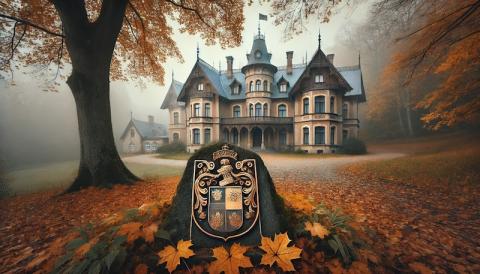
Family legends often hold a grain of truth, even if they become distorted over time. My journey into family history, particularly on my maternal lineage—through my mother's mother's father’s side (Rozentāls)—has been a fascinating one. What started as a casual exploration turned into a deeper dive into historical records, DNA analysis, and surprising discoveries about Baltic German nobility in my ancestry.
While researching my family history, I used Latvia’s Periodika.lv archive to look for information about Omuļi Manor. My search led me to the historical owners of the estate. Interestingly, I also found hints about Omuļi Manor through Estonian-language Wikipedia, which provided additional leads. Step by step, I was able to trace the von Anrep family—one of the prominent Baltic German noble families in Livonia. Eventually, my research even led me to Max von Anrep (1870–1915), one of the last barons of the family.
Curious about a potential genetic link, I decided to check my DNA matches on MyHeritage. To my surprise, there were von Anrep…
Salty Garden and David Gareja Monastery complex
| Living in Georgia | 32 seen

Our latest weekend escapade in Georgia was nothing short of a whirlwind, filled with diverse experiences, stunning landscapes, and a touch of nostalgia. It’s hard to believe that it’s been four years since we first stumbled upon the hidden gem that is Salty Garden back in 2021. That initial trip introduced us to its warm and welcoming host, David, and sparked a love for this unique spot near Bazaleti Lake. Fast forward to 2025, and we’re back at it—chasing adventures, capturing them on film, and sharing the journey with you.
This time around, we packed our weekend with a little bit of everything. With temperatures climbing above 28°C, the heat only fueled our excitement. Our adventure kicked off in Tbilisi, where we started the day with some intense Jiu-Jitsu training—a perfect way to get the adrenaline pumping. From there, we hit the road, heading northwest to reunite with friends at Salty Garden. The familiar drive brought back memories of that first visit in 2021, when we were instantly charmed by the serene surroundings and David’s hospitality. This time, we soaked in the laid-back vibes, caught up with old friends, and let the peaceful energy of Bazaleti Lake wash…
Stays & Trails La Maison Hotel Review in Panaji
| Hotel reviews | 31 seen
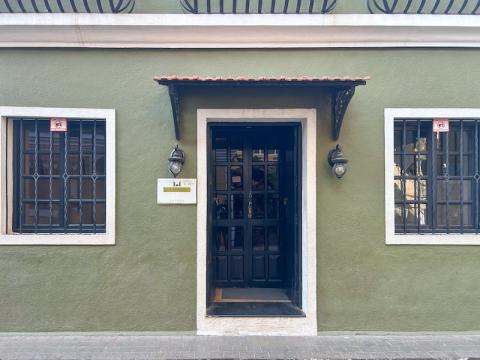
At the tail end of 2024, just before catching our flight back to Delhi, we decided to book a one-night stay at Stays & Trails La Maison Fontainhas in Panaji, Goa. After weeks staying in Palolem beach, we wanted to wrap up our trip with a relaxing stopover in the charming old town of Fontainhas, known for its colorful Portuguese-style houses and laid-back vibe. This boutique hotel seemed like the perfect pick—and it didn’t disappoint for a quick, cozy stay.
Located right in the heart of Fontainhas, La Maison blends into the historic neighborhood with its quaint charm. We arrived late in the evening, and the check-in was smooth. The room itself was a pleasant surprise: an extra-large bed that felt like a luxury after day of travel, a clean bathroom with hot water, and a refreshing shower. It wasn’t a sprawling resort, but for a one-night stay, it hit all the right notes—cozy, comfortable, and practical.
One quirky detail: breakfast isn’t served on-site. Instead, the staff directed us to another nearby hotel for the morning meal. It was a short walk, and while not the most convenient setup, the food was decent enough to fuel us for the day ahead. Back at La Maison…
GDP Growth in the Baltic States (2016–2025)
| Macroeconomics | 334 seen
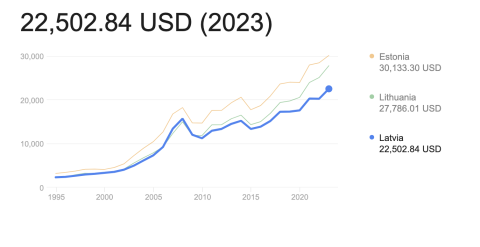
Between 2016 and 2025, the Baltic states—Estonia, Latvia, and Lithuania—have undergone significant economic transformations. This period spans two U.S. presidential terms under Donald Trump (2016–2020 and 2024–present). Analyzing the GDP growth of these nations during these intervals provides insights into their economic trajectories.
The second Trump presidential term has introduced new uncertainties regarding U.S. foreign policy and its commitment to NATO and European allies. The Baltic states, heavily reliant on American security guarantees, face concerns over potential shifts in defense priorities and economic cooperation. This uncertainty could influence investment trends, trade policies, and regional stability, making it critical for these nations to strengthen their economic and geopolitical resilience.
I have been following economic developments in the Baltic states for years, analyzing their growth patterns, economic policies, and market opportunities. Given my continued interest, this article expands on how the Baltic states have performed economically over the past decade and what to expect in the coming years.
GDP Growth in the Baltic States (2016–…February 2025 Stock Portfolio Update ($8,271)
| Stock Portfolio | 61 seen

At the end of February 2025, the total value of our stock portfolio was USD 8,271 (€7,953 ). What is about 4.19% increase or USD 332 gain, if compared to the previous month. Despite very turbulent month, our small but aspiring dividend stock portfolio ended in pluses.
We spent whole month Georgia, mostly staying in Tbilisi, kiddo got sick for almost two weeks, fun time at home. During last February we discovered the museum of Illusion in Tbilisi, which was quite amazing experience.
now, back to the stocks:
Stock PortfolioYTD our stock portfolio has gained 19.05%, what outperforms SP500 significantly (+1.24%). In our case the growth actually comes from recovery in options positions. In February few of our in the money options recovered quite significantly. Just a few to name, DB, INTC and BP
Stocks Bought in February:In February I mostly invested in fractional shares, with following buys.
- Apple Inc. (AAPL): Acquired an additional 0.9 shares, bringing my total holdings to 1.9 shares.
- AGNC Investment Corp. (AGNC): Increased my position by 1.4 shares, now holding 6.4…
Things to do in Palolem: Art Class with Swaroop
| Travel guides | 34 seen
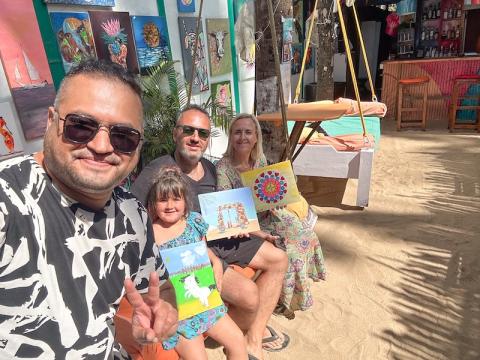
After spending a few weeks unwinding on Palolem Beach—swimming, surfing, and soaking up the sun—we decided it was time to explore some of the other activities the area had to offer.
Palolem is more than just a stunning beach; it’s a vibrant hub of experiences for both kids and adults. Among the variety of activities, Sandra booked an art class for Renee, which quickly turned into a family affair.
The art class, led by the talented and inspiring Swaroop, was a highlight of our stay. Swaroop’s warm and approachable nature made him a hit with both kids and grownups alike.
What started as an activity for Renee became an opportunity for all of us to tap into our creative sides. Swaroop’s patience and guidance transformed our hesitant brushstrokes into vibrant works of art.
By the end of the session, we had created some truly memorable paintings. Renee painted a graceful pony, Sandra worked on a beautiful mandala, and, with Swaroop’s help, I managed to draw an eye-catching tuk-tuk.
Each piece reflected not only our individual efforts but also the joyful atmosphere Swaroop fostered throughout the class.
The experience was more than…
Prague / Meet CE Conference
| Travel guides | 24 seen

In mid-October, during Renee's school break, we traveled to Prague for the Meet Central Europe Translator Conference. It was a great opportunity to connect with professionals from the industry, exchange ideas, and see how the translation business is evolving. But let’s be honest—the real highlight was exploring the city.
Between conference sessions, we made sure to check out some of Prague’s must-see spots. We climbed towers for panoramic views, wandered through historical museums, and even visited the Prague Zoo—though it felt a bit staged, like an artificial experience rather than a real wildlife environment. Still, an interesting stop.
Of course, no trip to Prague is complete without beer. Lots of it. The city does not disappoint when it comes to good brews, cozy pubs, and that classic European atmosphere where a pint is just a normal part of the day.
Overall, Prague has its charm—cobblestone streets, medieval architecture, and a rich history. That said, it was packed with tourists, which took away a bit of the magic. But that’s Prague for you.
Check out the video for the full experience, and if you like it, give it a thumbs up!
Fishing Adventure in Palolem: Dolphins, Turtles, and Local Flavor
| Outdoor Activities | 28 seen
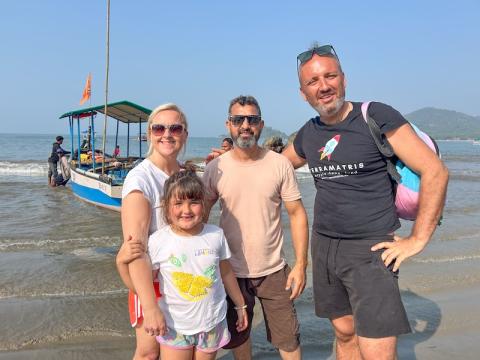
During our stay at Maria Guest House in Palolem, we had the pleasure of embarking on an unforgettable fishing adventure organized by our host, Mir. It all began with an early start to the day—we left the hotel at 7:00 AM, just as the sun began to light up the picturesque Goan coastline.
Mir had arranged everything seamlessly. A taxi was waiting to take us to the local boat pier, a short 10-15 minute drive from the guest house. Upon arrival, we found our boat ready and waiting. Excitement filled the air as we set off for a three-hour fishing trip in the serene waters near Palolem.
The experience was as thrilling as it was tranquil. Sandra had the best luck among us, catching two fish, while Mir—an experienced angler—also managed to reel in a few.
Unfortunately, Renee and I didn’t catch anything, but the joy of being out on the water more than made up for it. We were treated to the spectacular sight of dolphins gracefully swimming nearby, and at one point, we even spotted a hungry turtle nibbling on fish bait. These moments of connection with nature were truly magical.
Mir’s company added another dimension to the trip. Between casts, he shared…